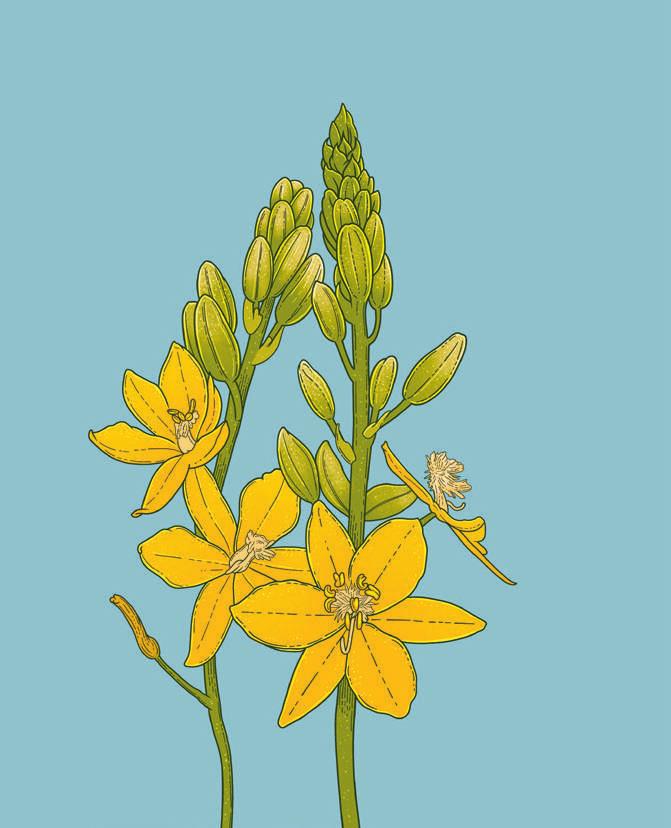
2 minute read
Grass Tree
~ Xanthorrhoea glauca ~
XANTHORRHOEACEAE
Advertisement
These ancient wonders are truly deserving of reverence and contribute to this country’s unique identity. Grass trees are neither grass nor trees but a prehistoric relative of the Lily. Their iconic ‘trunks’, which take decades to produce, are formed by the bases of the old leaves sandwiched and cemented with the tree’s own resin. This trunk provides protection from fires and can often be seen blackened and charred, giving them their unique appearance. Its flowers are nectar-rich and attract a wide range of insects, birds and mammals including the Regent Skipper (Euschemon rafflesia), a native butterfly illustrated here.
WHERE TO LOOK
The iconic Grass Tree is widespread, encompassing a large portion of the country’s south-east coast and extending inland. You will see them in communities throughout rocky ranges, weaving through woodlands and on the steep sides of gorges.
Locations → Queensland: Bunya Mountains National Park; NSW: Jerrawangala National Park, Blue Mountains National Park, Cathedral Rocks National Park and Torrington Town Fire Trail in Torrington State Conservation Area; Victoria: Pine Gully Nature Walk in Warby-Ovens National Park.
FEATURES
The trunk, created by resinous leaf bases, can grow up to 5m tall and will be singular or branched with the new grass-like leaves forming a mop-top hairdo. The leaves are 5mm wide and diamond shaped with a blue-green hue. Some trees have a ‘skirt’ of dead leaves; a long skirt signifies a longer period without fire. The inflorescences are tiny creamy starburst flowers arranged along a dramatic 1–2m tall spike. If pollinated, flowers will turn into small capsules containing a few hard black seeds. A Grass Tree has a growth rate of only 1–2cm a year; larger ones you find could be over 100 years old, and indeed there are examples that could be 600 years old – making them some of the oldest living plants worldwide.
FLOWERING SEASON
Spring and summer → This perennial can be seen flowering in spring and summer. The growth of the spectacular flower spike takes a lot of energy from the tree, so flowers won’t appear every season.
TRADITIONAL USES
An important resource for First Nations People, the resin has been used as an adhesive or bonding agent and was often traded. Spear shafts were made from the base and the long flower stalk used as a drill to create fire. Flowers have been soaked to form a sweet drink and used in fermented beverages. Staple foods from the Grass Tree include roots, tender leaf bases and the seeds ground into flour.
PLANTING
Given these trees can last for hundreds of years, they tend to be a little slow moving. Seeds can take up to a year to germinate (28 to 365 days), four years to produce a trunk and ten to 20 years to mature. Plants can also be found through specialty nurseries. Similarly to some Orchids, Grass Trees have a special relationship with Mycorrhizal Fungi (see p. 3) and aren’t easily transplanted. They will need a sunny position and very well drained soil, which can be achieved by planting on a mound or in rockeries.










